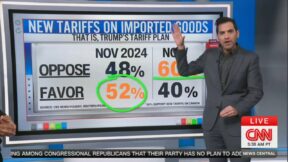Breaking Down (Then Rebuilding) the Media Industry, One Atom Of Content At A Time
Institutional journalism started to splinter the day Tim Berners-Lee created the first webpage. But for the institutions to actually crumble, the Web had to splinter, too.
Berners-Lee’s original insight was to use hypertext as a connector between blocks of text. If you were writing a dissertation about George Washington, you could cross-reference John Adams by making his name link to a descriptive webpage. Berners-Lee’s web was sort of what Wikipedia is now: indexed, cross-referenced, infinitely deep.
As the Web grew, the system started to break. There were too many pages with too few quality links; searches were slow and inaccurate. Which opened the door for Google. By analyzing the information provided on the page with the link referring to a site, Google leveraged the contextual surroundings of the Web to vastly (infinitely?) improve search quality. With Google’s success came attempts to game the system, search engine optimization and content farming being only two of the more recent examples.
Today, more and more links arrive not with the context of a referring page, but with the context of a referring individual. We (or, our Twitter and Facebook accounts) have taken the place of Berners-Lee’s webpages. We’re aggregated collections of information about ourselves and the things we’re interested in, and, at least for hardcore users, we’re the first source of our own information.
The Web atomized publications; social media is atomizing stories. We don’t have to weed through a long New York Times article to identify the most interesting nuggets, they turn up six times in our Twitter feeds – at least, the nuggets most commonly considered interesting do.
In essence, the Web isn’t a web of webpages anymore, it’s a web of information. Collections of information are necessarily disintegrated into shareable nuggets. This week’s South by Southwest is an entire conference with a theme, seminars, a meeting place. But most people’s experience of it (if any) is through tiny morsels of experience shared by their friends or, perhaps, slightly larger morsels shared by the press. We’re emailing MP3s, not taking an LP to the Post Office. That’s how the Web now shares information. And this is what makes Facebook’s “like” system so valuable: they have near-exclusive ownership over the new contextualization.
That’s not how journalistic institutions like it.
>>>Next – Are the tools behind the atomization of media better for consumers or editors?




